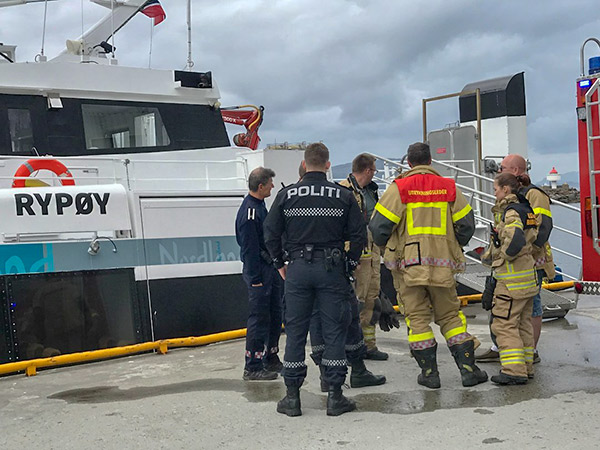What happened?
The check lists were followed when starting a small high-speed craft. A total of 36 passengers and 4 crew members were on board. Shortly after the vessel had started sailing along the fjord, the fire alarm sounded in the machinery space on the port side. Open flames in the foremost part of the engine could be seen on the monitoring system screen. The emergency stop for the port side engine was activated, and the engine was stopped.
A mayday signal was sent out to the coastal radio station, Kystradio, and the passengers were informed about the incident. Subsequently, the ventilation to the machinery space was stopped, quick-closing fuel valves were shut, the ventilation inlet/outlet was closed in the machinery space, and the CO2 flooding system was activated.
How was the situation resolved?
The master was able to turn the vessel around by using the starboard side engine, which was functioning. The shipping company's office was informed of the incident, and emergency procedures were initiated. There was still smoke to be seen on the monitoring system screen. However, no flames were visible. The decision to return to port to evacuate passengers was made, and two vessels escorted the high-speed craft to port.
As the high-speed craft docked, personnel from the shipping company’s office were there to take care of the passengers. A local fire-fighting crew, including smoke divers, entered the vessel to check the machinery space on the port side.
Causes and consequences
The direct cause of the fire was a diesel leak from pipes or fittings near the diesel pump. As a result, diesel was spilt on hot surfaces, damaging the turbine on the port side engine. There was also carbon deposit in the machinery space due to the fire.
Lessons learned
In retrospect of the incident, the things described above provide a clear picture of the course of action. All fires are different. Therefore, each vessel must have its own procedures, practices and regular drills.
Risk assessments and courses of action in case of a fire as well as a well-considered crisis plan are important. A fire on board a passenger craft may have major consequences, and it is vital to notify the coastal radio station (Kystradio) and nearby vessels. This makes it easier to get help from others in a situation where help is needed.
The next step is to maintain the safety of passengers. The chances of extinguishing the fire must be assessed. In the event of a fire in the machinery space, there is often a fixed list of actions to be taken. This list is well known to the crew members. Performing the procedures they have practised and complying with such procedures and checklists, provide the crew members with a sound basis for facing any unforeseen incidents.
The NMA has published several texts regarding «fire on board»:
Lessons learned – serious engine fire
Lessons learned – fire in the wheelhouse of a fishing vessel
Lessons learned – fire in an electrical installation on a vessel of less than 15 metres
Lessons learned – sources of fire on fishing vessels
AIBN reports on fires on board ships:

